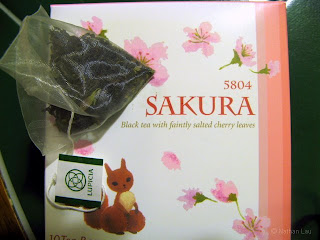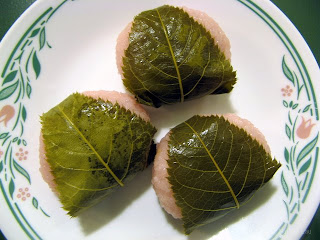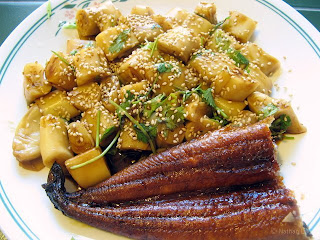Growing up in Hawaii, I was exposed to a lot of local Japanese culture. But it wasn’t until I met Annie that I was introduced to Japanese tea culture. We were privileged to attend a Japanese tea ceremony demonstration held at the Japanese Tea Garden on the grounds of the East West Center at the University of Hawaii. It was quite an experience, one that I will not forget.
Coming from a British-influenced country like Malaysia, Annie loves to drink tea. She was so happy when a Lupicia tea store opened up in the Valley Fair mall in San Jose. They have such really wonderful teas there, and sometimes you can find good deals on clearance items.
Such as this sakura tea – a black tea flavored with lightly salted and cured cherry leaves.
Of course, now you have to have something to go with the tea. What better finger food to enjoy with sakura tea, than sakura mochi? The soft, sweet, glutinous rice paste is filled with sweet azuki bean paste, then wrapped in a slightly salty cherry leaf that adds a faint “green” flavor and a pleasing bite to the texture profile.
Nibble, sip. Nibble, sip. Let the flavors meld in your mouth…mmmmm…..perfect!
What are your favorite tea / finger food combinations?
Aloha, Nate




